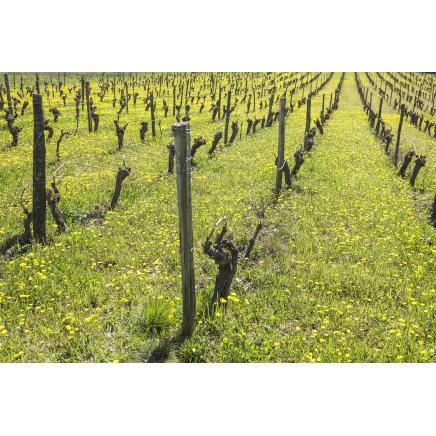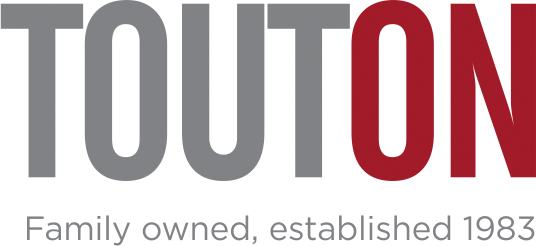France Launches Official Natural Wine Certification

France Launches Official Natural Wine Certification
Natural wine is one of the great success stories of the last decade. It began as an unofficial movement in France in the late 1980s and grew into an international phenomenon 20 or so years later.
article originally featured in Wine Enthusiast May 20th 2020
Now, natural wine fairs are held worldwide, and most major cities either have dedicated natural wine bars, or places that feature natural wine-heavy lists. There remains one problem. The term “natural” has no widely accepted definition in wine and, until this year, had no legal certification. The general concept is that natural wine is made from grapes farmed organically or biodynamically. Natural winemaking uses wild yeasts and no additives, save perhaps some sulfur dioxide at bottling.In March, the Institut National de l’Origine et de la Qualité (INAO), France’s official agricultural organization, recognized a definition of natural wine proposed by the Syndicat de Defense des Vins Naturels, an independent group that had lobbied for certification for a decade. The Syndicat de Defense des Vins Naturels uses a system called Vin Méthode Nature. There are two tiers of certification: those with no added sulfites, and those that add less than 30 mg/L sulfites. The designations are a bit problematic. Yeasts can produce varying amounts of sulfites during fermentation. Some yeast strains will produce 10 mg/L or more before the wine is bottled. Despite occurring naturally, these wines would need to be labeled as containing sulfites, even though the winemaker didn’t add them artificially. It’s also not rare for yeasts to produce more than 30 mg/L of sulfur dioxide, which means that the wine cannot be certified. News of this “official recognition” of natural wine generated lots of debate. While some see the benefits, many members of the natural wine community don’t favor certification. Few leaders of the movement describe their wines as “natural.” Many couldn’t label them as such, anyway. The term isn’t allowed on labels in the European Union. Is certification needed? And do those that make natural wine actually want it?
“It is indeed wanted,” says Alice Feiring, a New York-based journalist and author who specializes in natural wine. “I’m often asked if there’s certification, so the consumer can choose a real one.” INAO is not behind this certification, says Feiring. It simply reviews applicants and monitors those certified. Winegrower Jonathan Hesford, of Domaine Treloar in Roussillon, France, likens the INAO to “a patent body” that approves applications from syndicates, or groups of growers, who want to classify their wines. “The INAO will ask the syndicate to create a cahier des charges [specifications] for the wine, [putting] the rules and norms in place for all the others,” he says. If the cahier is deemed rigorous enough, the INAO will authorize and police it. A possible benefit of certification is accountability. Those producers who use the Syndicat’s official “natural wine” logo have legal obligations. People can go to prison for wine fraud in France.
“Some of our growers are not keen that natural [wine] has become a bandwagon movement, and all sorts of people are jumping on the bandwagon without due verification of the way they farm and what they do in the winery,” says Doug Wregg, of leading London natural wine agency Les Caves de Pyrene. “Other growers will ignore this as they see it as yet another attempt to codify something that they have always done.” Others argue the designation is opposed to the spirit of natural wine. “Natural wine represents freedom to many of its adherents,” says Rachel Signer, editor of natural wine magazine Pipette. “The freedom to work with a vineyard that is organic in practice, but not certified, is of utmost importance to people who may be scrambling for grapes in a really tough vintage. And the freedom to make wine totally sans bureaucracy is something I really get.” The certification could be used by companies simply in search of a commercial opportunity, says Wregg. “If natural wine is organic farming plus technique, then bigger brands can go through the motions and hit the brief.”
“That’s totally against the spirit of the movement,” says Signer. “It’s always been about passion, tenacity, camaraderie. People make natural wine because they love it, with all its oddities, drawbacks and risks.” Romania’s Cramele Recas operates three wineries and produces 25 million bottles a year. Four years ago, Cramele Recas introduced a product called Orange Natural Wine, a big success for the company. Production is at 120,000 bottles a year and growing. Cramele Recas added a Glou Glou Natural Red to the range. “We think these fulfill all the criteria for natural wines,” says Philip Cox, co-owner and CEO. “It is made from organic grapes with no additives, and the total sulfur dioxide is under 30 ppm. There is no filtering.”
Cox is in favor of certification. He’s approached the minister of agriculture in Romania to see whether there could be an official definition of natural wine there, too. “With orange wines and natural wines, all the arguments seem to be about technical things,” says Cox. “How much sulfur do they have? Are you allowed to centrifuge? I’d rather have all this written down in a law, so we can actually talk about what the wine is like.” Kevin McKenna, of New York-based natural wine agency Louis Dressner, points out that the FDA began collecting input to regulate the term “natural” in the U.S. a few years ago. According to the 2016 definition, a “natural” food has nothing artificial or synthetic included or added to it. The policy doesn’t extend to production or manufacturing methods, however, such as pesticides. Few wine companies used the FDA’s definition except for some big-scale wineries, McKenna says. But the new French certification creates some problems.
“The criteria for the U.S. labeling for ‘natural’ does not line up with the new French regulations, so label approvals for those including a natural designation will cause some bureaucratic befuddling,” says McKenna. “I applaud the effort, but I am very much not sure of the result.”


